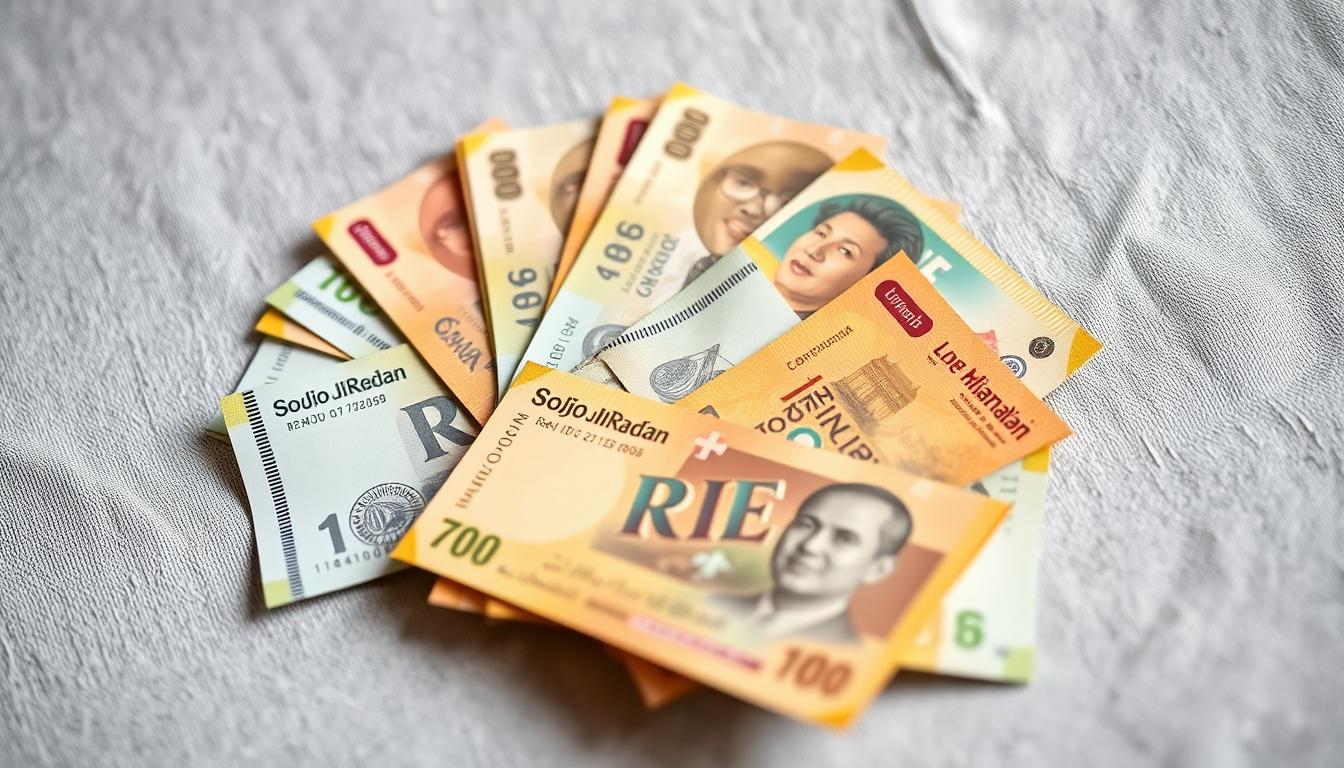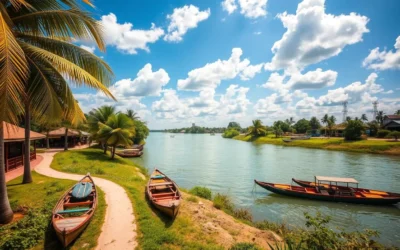Did you know that Cambodia operates on a unique dual-currency system? While the official currency is the Cambodian Riel (KHR), the US dollar (USD) is widely accepted, especially in tourist areas. This makes managing your money during your trip both convenient and a bit tricky if you’re not prepared.
Understanding how to navigate this system is essential for a smooth experience. The Riel, symbolized as ៛ and coded as KHR, is used for smaller transactions, while USD is often preferred for larger purchases. Knowing the current exchange rate and when to use each currency can save you time and money.
In this guide, we’ll explore practical tips for handling cash, using cards, and finding the best places to exchange your money. Whether you’re planning your first visit or returning for another adventure, this guide will help you make the most of your travel experience. Let’s dive in!
Understanding Cambodia’s Currency Landscape
Navigating the currency system in Cambodia can be both fascinating and practical for visitors. The country operates on a dual-currency system, where the Cambodian Riel (KHR) is the official currency, but the US dollar (USD) is widely accepted. This unique setup requires a bit of planning to ensure smooth transactions during your stay.
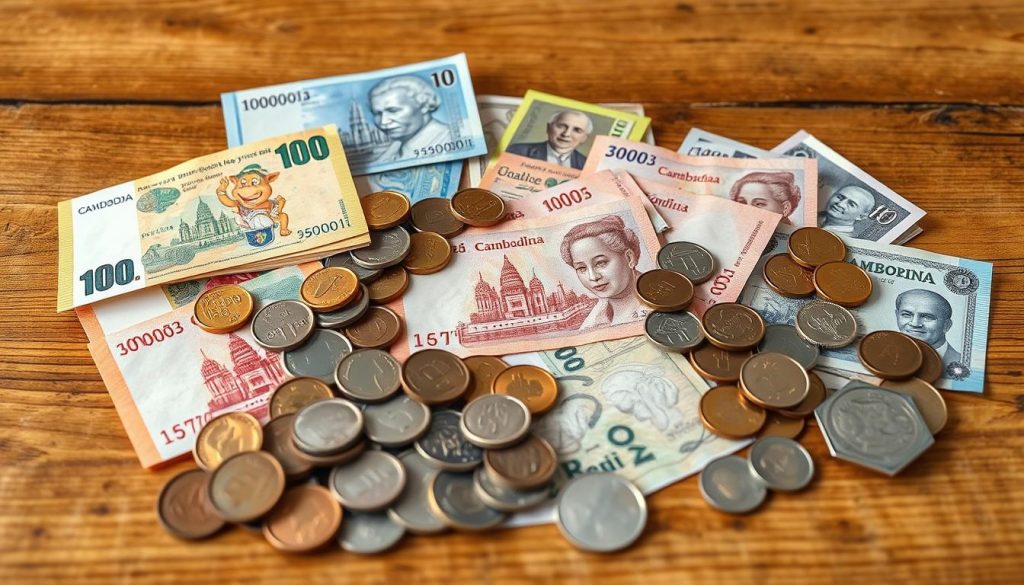
The Cambodian Riel Explained
The Cambodian Riel, managed by the National Bank of Cambodia, is the backbone of the local economy. It comes in both banknotes and coins, with denominations ranging from 100 to 100,000 riel. Smaller transactions, like buying street food or local goods, are often conducted in riel. Having some riel on hand is essential, especially in rural areas or smaller towns where USD may not be as readily accepted.
Here’s a quick breakdown of the riel denominations:
- Coins: 50, 100, 200, and 500 riel
- Banknotes: 1,000; 2,000; 5,000; 10,000; 20,000; 50,000; and 100,000 riel
Dual Currency Use: USD vs. KHR
While the riel is the official currency, the USD is commonly used for larger purchases, such as hotel stays or restaurant bills. Many establishments in Phnom Penh and other urban centers display prices in both currencies. However, it’s worth noting that small USD notes, like $1 or $2, are often less accepted in local markets.
The exchange rate is relatively stable, with 1 USD typically equaling around 4,000 riel. This dual system offers flexibility but also requires you to pay attention to which currency is being used. For example, you might receive change in riel even if you pay in USD. Keeping both currencies handy ensures you’re prepared for any situation.
Understanding this currency landscape will help you manage your money effectively and make the most of your day-to-day experiences. Whether you’re exploring bustling markets or dining in upscale restaurants, knowing when to use riel or USD can save you time and hassle.
Cambodia: Ultimate Travelers Guide to Currencies & Payments
Flexible payment methods can make your travel experience smoother and more enjoyable. Whether you’re shopping at local markets or dining at restaurants, having the right tools ensures you’re prepared for any situation. This section will guide you through the best practices for managing your money efficiently.
Benefits of Travel Debit Cards
Using a travel debit card, like the Wise Multi-Currency Card, can save you from unnecessary transaction fees. These cards often offer better exchange rates and lower costs compared to conventional credit cards. They’re also widely accepted, making them a reliable option for your trip.
Here’s why travel debit cards are a smart choice:
- Lower fees for international transactions.
- Ability to hold multiple currencies in one account.
- Convenient for both online and in-person purchases.
Security Through Multiple Payment Methods
Carrying cash, a travel card, and a backup credit card ensures you’re covered if one method fails. For example, some local markets may prefer cash, while hotels and restaurants often accept cards. Having multiple options provides peace of mind and flexibility.
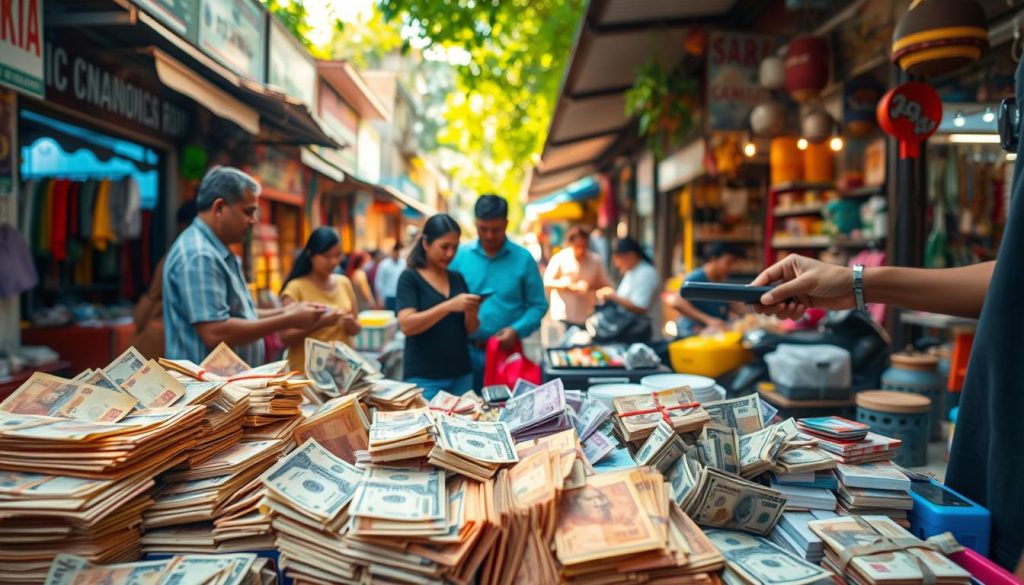
Tips for Smooth Transactions
To avoid surprises, always check for transaction fees before using your card. Some banks charge extra for international withdrawals or purchases. Additionally, keep small bills handy for tipping and smaller purchases, as not all places accept large denominations.
Here are a few practical tips:
- Notify your bank about your travel plans to avoid card blocks.
- Use local currency for better deals in markets.
- Keep a mix of cash and cards for different situations.
By following these tips, you can enjoy a hassle-free experience and focus on making the most of your trip. Whether you’re exploring bustling markets or relaxing at a hotel, knowing your payment options will keep your journey stress-free.
Managing Travel Cards and ATM Withdrawals
Using multi-currency cards and ATMs wisely can save you time and money abroad. With the right tools, you can handle your finances efficiently and avoid unnecessary fees. This section will guide you through selecting the best travel card and using ATMs safely.
Choosing the Right Multi-Currency Card
A multi-currency card, like the Wise or Revolut card, is a must-have for travelers. These cards allow you to hold and spend multiple currencies at competitive exchange rates. They also offer low transaction fees, making them a cost-effective choice.
Here’s why these cards stand out:
- Instant currency conversion for seamless purchases.
- Fee-free ATM withdrawals up to a monthly limit.
- Secure backup option when linked to your bank account.
For example, the Wise card supports over 40 currencies and uses the mid-market exchange rate. This ensures you get the best value for your money.
Navigating ATMs Safely
ATMs are widely available in major cities, but using them smartly is key. Always check for withdrawal fees and daily limits to avoid surprises. Some ATMs may charge additional fees, so it’s best to use those affiliated with your bank.
Here are a few tips for safe ATM use:
- Notify your bank about your travel plans to prevent card blocks.
- Choose ATMs in secure locations, such as banks or shopping centers.
- Keep small bills like $1 or $2 for emergencies, as not all machines dispense them.
By following these steps, you can ensure smooth and secure access to cash during your trip.
Smart Currency Exchange Strategies
Managing your money efficiently while traveling starts with smart currency exchange strategies. Whether you’re planning ahead or exchanging on the go, knowing the best practices can save you time and cash.

Pre-Trip Currency Conversions
Exchanging some currency before your trip can secure a favorable exchange rate. Banks and online services often offer better rates than airport kiosks. For example, using a multi-currency card like Wise allows you to lock in rates and avoid high transaction fees.
Here’s why pre-trip conversions are a smart move:
- Access to competitive rates before departure.
- Convenience of having local cash upon arrival.
- Reduced reliance on expensive airport exchanges.
On-the-Ground Exchange Tips
Once you arrive, avoid exchanging money at airports or hotels. These locations often charge inflated rates. Instead, head to city-center exchanges or local banks in places like Phnom Penh for better deals.
Here are a few practical tips:
- Check the mid-market rate online for a fair benchmark.
- Carry small denominations for easier transactions.
- Use dedicated travel cards for seamless conversions.
By following these strategies, you can maximize your travel budget and avoid unnecessary fees. Whether you’re exploring bustling markets or dining out, smart exchange decisions keep your journey stress-free.
Payment Options for Every Situation
Handling payments abroad doesn’t have to be stressful if you know the right options. Whether you’re exploring local markets or dining at a restaurant, having the right mix of cash and digital methods ensures you’re prepared for any scenario.
When to Use Cash
Cash is still king in many situations, especially for smaller purchases. Street vendors, local markets, and tuk-tuk rides often prefer cash transactions. Carrying small USD notes or local currency is essential for these moments.
Tipping is another area where cash is preferred. Whether it’s rounding up a fare or leaving a tip for service, having small bills on hand shows appreciation and avoids awkward situations.
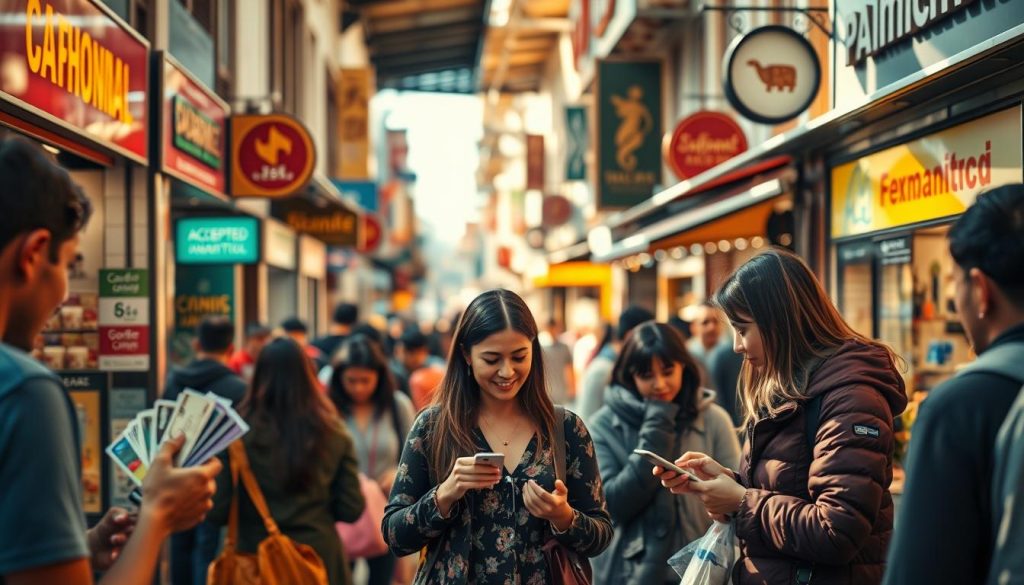
Benefits of Digital Payments
For larger transactions, digital payment methods like travel cards or credit cards offer convenience and security. Many restaurants and hotels accept cards, making them a reliable option for bigger expenses.
Using a travel card can also save you from high exchange rates and foreign transaction fees. These cards often provide better rates and are widely accepted in urban areas.
Here are a few advantages of digital payments:
- Lower fees for international transactions.
- Secure and easy to track expenses.
- Accepted at most upscale establishments.
Balancing both cash and digital methods ensures you’re ready for any situation. Whether you’re shopping at a local market or dining out, having the right payment option makes your trip smoother and more enjoyable.
Budgeting and Cost Management in Cambodia
Planning your daily expenses can make your trip stress-free and enjoyable. Knowing what to expect in terms of costs helps you manage your money wisely and avoid overspending. Whether you’re exploring bustling markets or visiting iconic sites like Angkor Wat, a little preparation goes a long way.
Estimating Daily Expenses
Daily costs can vary depending on your travel style. For budget travelers, street food and local transport are affordable options. Here’s a breakdown of typical expenses:
- Street food: 4,000-16,000 KHR ($1-4 USD) per meal.
- Local transport: 6,000-200,000 KHR ($1.50-50 USD) for tuk-tuk rides.
- Attractions: Entry fees for Angkor Wat range from 160,000-1,000,000 KHR ($40-250 USD).
For mid-range travelers, meals at restaurants and private transport are common. Expect to spend around 10,000-50,000 KHR ($2.50-12 USD) per meal and 32,000-200,000+ KHR ($8-50+ USD) for private rooms.
Avoiding Hidden Transaction Fees
Hidden fees can quickly add up, but with a few strategies, you can keep your costs low. Always check for transaction fees when using ATMs or making purchases. Some banks charge extra for international withdrawals, so it’s best to use ATMs affiliated with your bank.
Here are a few tips to avoid unnecessary charges:
- Use a travel card with low foreign transaction fees.
- Verify prices in both USD and local currency to ensure accuracy.
- Notify your bank about your travel plans to prevent card blocks.
| Expense | Cost in KHR | Cost in USD |
|---|---|---|
| Street Food | 4,000-16,000 | $1-4 |
| Tuk-Tuk Ride | 6,000-200,000 | $1.50-50 |
| Angkor Wat Entry | 160,000-1,000,000 | $40-250 |
By setting a daily spending limit and tracking your expenses, you can stay within your budget. Whether you’re shopping at local markets or exploring Siem Reap, these tips ensure you’re prepared for every day of your trip.
Local Payment Practices and Tipping Etiquette
Understanding local payment practices can make your trip smoother and more enjoyable. Knowing how to tip and which payment option to use in different situations ensures you’re prepared for every interaction. Whether you’re dining at a restaurant or exploring iconic sites like Angkor Wat, these tips will help you navigate local customs effortlessly.
Understanding Merchant Preferences
In this country, merchants often have specific preferences for payments. For example, street vendors and local markets usually prefer cash, especially smaller denominations. On the other hand, hotels and upscale restaurants often accept cards, making them a convenient option for larger transactions.
Here’s what you need to know:
- Carry small bills for street vendors and tuk-tuk rides.
- Check if your restaurant includes a service charge before tipping.
- Use travel cards for seamless transactions in urban areas.
Proper Tipping Methods for Services
Tipping is not mandatory but is appreciated, especially in the tourism and hospitality sectors. For example, a 10% tip is standard at restaurants if no service charge is included. For tour guides, tipping $10-$20 per day is customary, depending on the quality of the experience.
Here’s a quick guide to tipping in various scenarios:
| Service | Suggested Tip |
|---|---|
| Restaurant Meal | 10% of the bill |
| Tour Guide | $10-$20 per day |
| Tuk-Tuk Ride | Round up the fare |
| Hotel Porter | $1-$2 per suitcase |
By following these practices, you’ll show appreciation for excellent service and make your interactions more enjoyable. Whether you’re shopping at a local shop or exploring the wonders of Angkor Wat, knowing the norms ensures a seamless experience.
Conclusion
Planning your finances for a trip abroad doesn’t have to be overwhelming. By understanding the local currency and payment options, you can ensure a smooth experience. Always exchange your money at the best rate and use reliable travel cards to avoid unnecessary fees.
Combining cash and digital payments is a smart way to cover all expenses. Carry small denominations for local markets and use credit cards for larger purchases. Comparing fees and rates can save you money, so choose trusted banks and services.
Even though USD is widely accepted, having local currency is essential for smaller transactions. With proper preparation, you can focus on enjoying your travel without worrying about finances. Explore confidently, knowing you’re ready for any situation.
The above is subject to change.
Check back often to TRAVEL.COM for the latest travel tips and deals.
Here are some Tours & Sightseeing suggestions that might pique your interests!
